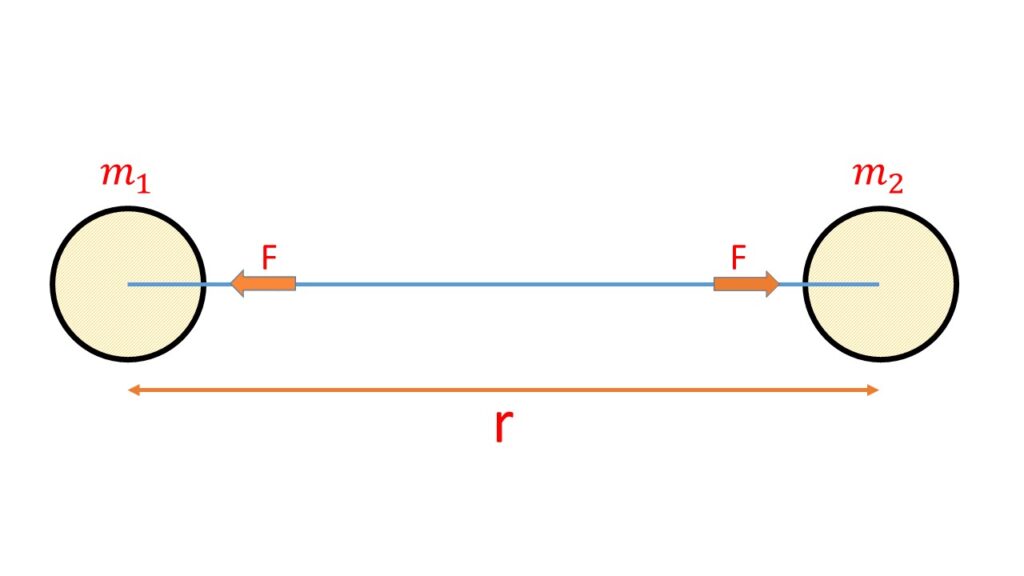Gravitational Constant (G):
If \( m_1 \) and \( m_2 \) are the two masses of two bodies respectively separated by a distance r, the force of attraction F along the line joining the centres of the two bodies is

F \alpha \frac{m_1 m_2}{r^2}F = G \frac{m_1m_2}{r^2}Where G is the constant of proportionality and is called the Gravitational Constant.
If \( m_1= m_2= 1 \) and \( r=1 \) then \( F=G \). Therefore the gravitational constant is equal to the force of attraction between two bodies each of unit mass separated by a unit distance apart.
Dimension of G:
F = G \frac{m_1m_2}{r^2}G=\frac{Fr^2}{m_1m_2}Dimension of G is \( \frac{MLT^{-2}L^2}{M^2} \) = \( M^{-1}L^3T^{-2} \)
Units of G:
The units of G are
- dyne cm2 /gm2 in c.g.s. unit,
- poundal-ft2/lb2 in F.P.S. unit,
- newton-mt2/kg2 in S.I. unit.
Magnitude of G:
The vale of G is 6.670 * 10-8 dyne-cm2/gm2 and 6.670 * 10-11 newton-mt2/kg2 .
